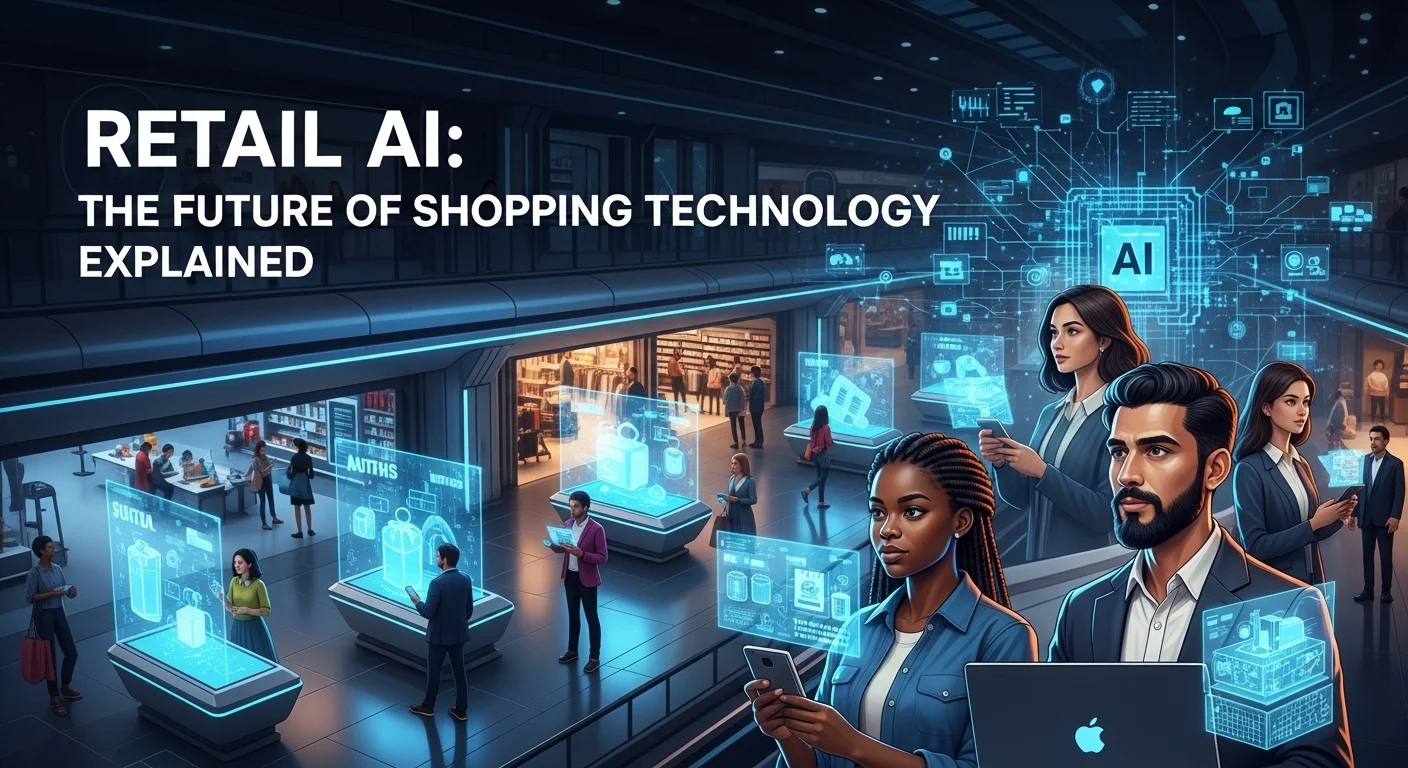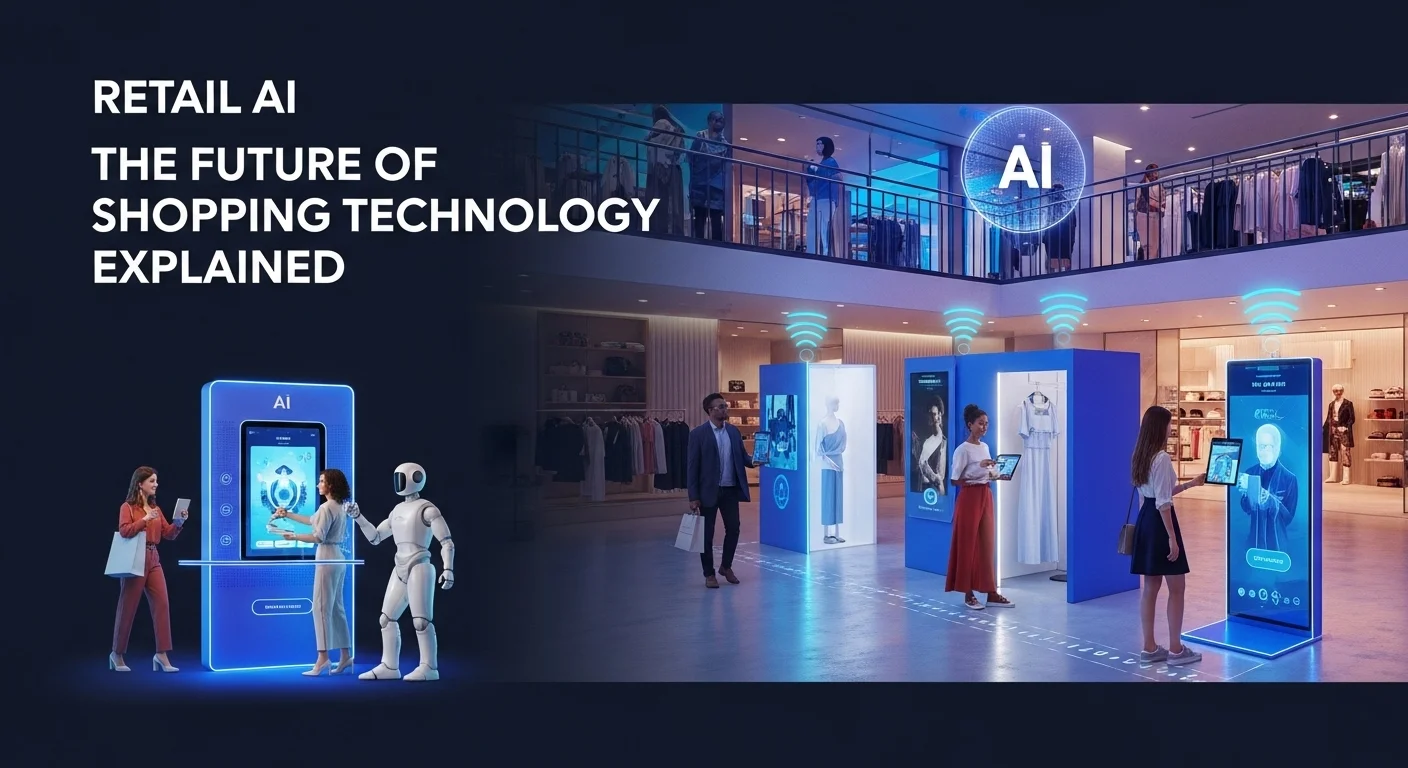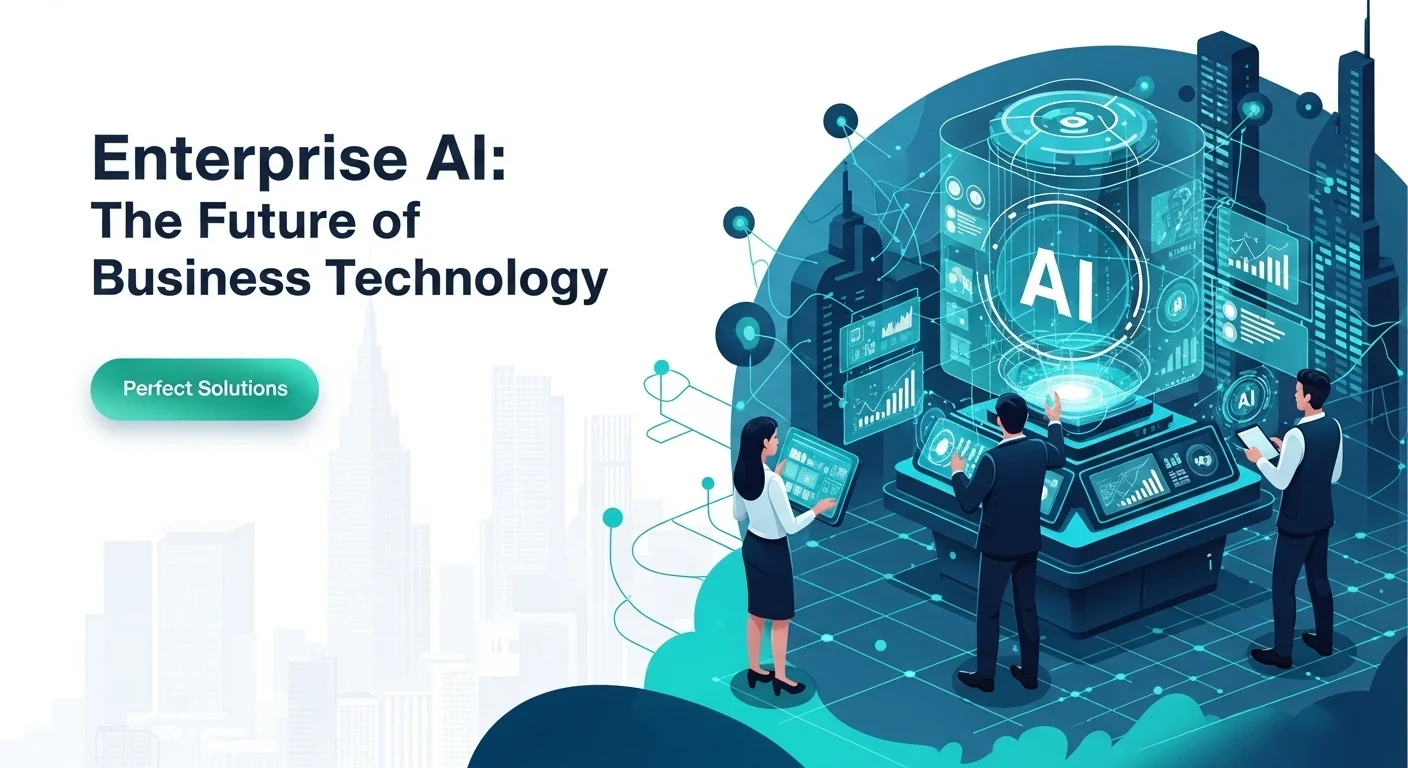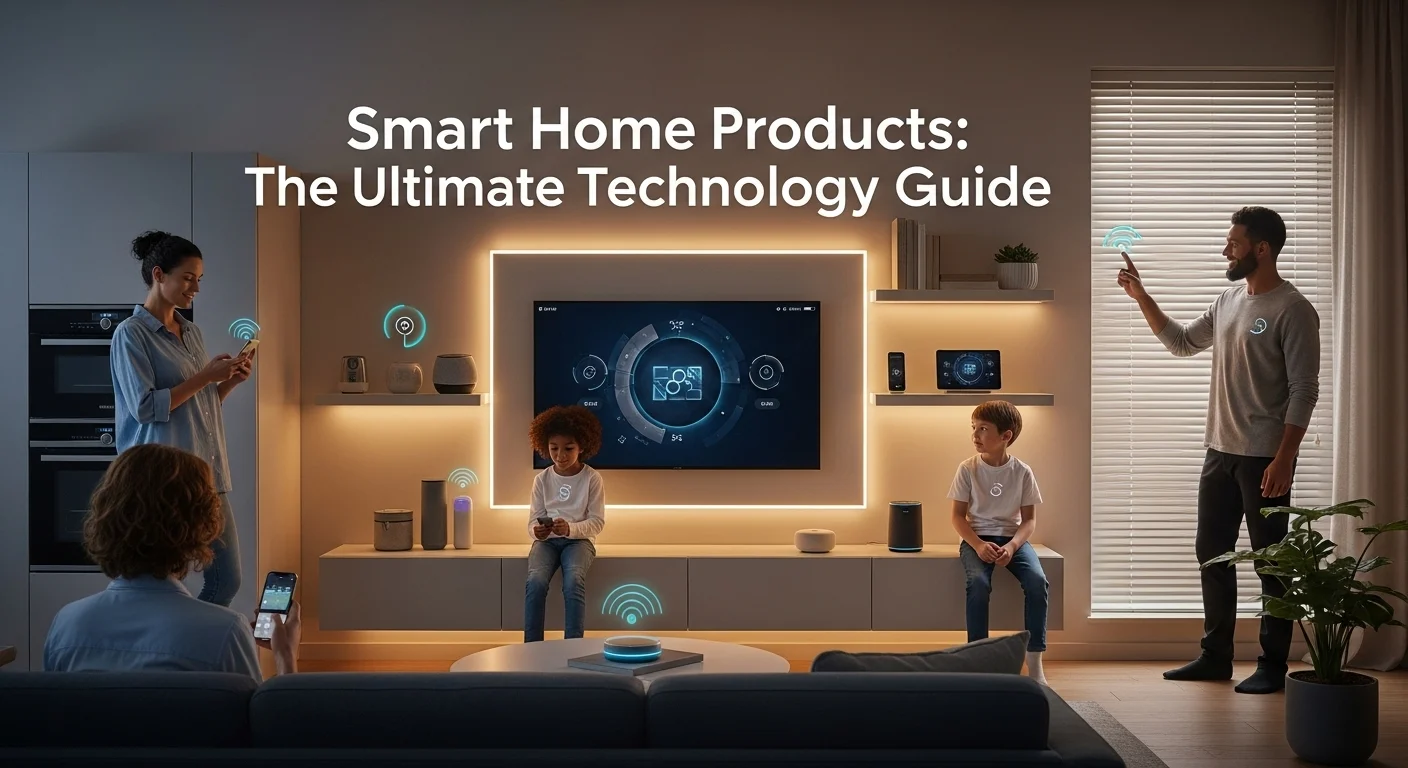Retail AI: I've Seen the Future of Shopping, and This Is It

Executive Summary
It feels like just yesterday we were talking about AI in retail as some far-off sci-fi concept. But let me tell you, it's already here and it's changing everything. This isn't just about robots and algorithms; it's about creating genuinely better shopping experiences. In this guide, I'll walk you through what Retail AI actually is—the real tech behind it like machine learning and computer vision—and how it's being used today to make customers happier and businesses smarter. We'll look at the tangible benefits, from boosting profits to personalizing marketing in ways that actually work. I'll even share some insights from my experience in the fashion world, showing how AI is completely reinventing the industry. If you're in business, you need to understand this shift. This article is your map to navigating it.
Table of Contents
- What is Retail AI and Why is it So Important?
- The Core Technologies Driving the Change
- Real-World Business Applications and Benefits
What is Retail AI and Why is it So Important?
For years, data has been the currency of business, but now, intelligence is the engine. At the heart of this shift is Retail AI, which is simply the application of artificial intelligence to how we buy and sell things. I've seen it evolve from a buzzword into a fundamental part of staying competitive. It's not one single piece of tech, but a whole toolkit designed to understand what customers want (sometimes before they do), make operations smoother, and help us make smarter decisions based on real data, not just gut feelings. The key technologies making this happen include machine learning (ML), which is like teaching a computer to learn from experience, just like a seasoned store manager. Then there's Natural Language Processing (NLP), the tech that lets chatbots and voice assistants understand and talk to us like humans. We also have computer vision, which gives machines 'eyes' to see and interpret things like store layouts or product placement. And finally, predictive analytics pulls it all together to forecast future trends, from product demand to customer behavior. The importance of this can't be overstated. The market is crowded, and customers expect seamless, personal service instantly. Retail AI gives us the tools to deliver that. By understanding a customer, AI can offer product recommendations that actually make sense and create marketing that feels personal, not generic. This builds loyalty and, frankly, it sells more products. Operationally, the impact is huge. I've seen firsthand how smart AI can fix the age-old retail nightmare of having too much or too little stock. It helps untangle complex supply chains and makes everything more efficient, which means lower costs and better profits. For any retail business today, adopting AI isn't just an option; it's essential for growth. The companies pioneering this space, both big players and scrappy startups, are building the future of commerce right now. The fashion industry is a perfect example of this. It's fast-paced and trend-driven, a perfect playground for AI. Algorithms can spot the next big trend on social media before it hits the mainstream. Virtual try-on tech is slashing return rates, a huge win for both customers and businesses. AI is even helping fashion become more sustainable by predicting demand more accurately, which means less waste. From luxury brands to your favorite online store, AI is a partner that's making retail smarter, more customer-focused, and more efficient.
The Core Technologies Driving the Change
To really get what's happening with Retail AI, you have to understand the engines under the hood. These technologies work together to create some truly amazing experiences. The first and most important is Machine Learning (ML). This is where we 'train' a computer with tons of data so it can spot patterns and make predictions. The most common example is a recommendation engine. We've all seen it on Amazon or Netflix. It looks at your history, compares it to people with similar tastes, and suggests things you'll probably love. A huge chunk of online sales comes directly from this kind of smart suggestion. ML is also a powerhouse for forecasting demand, helping businesses stock the right products at the right time. The second pillar is Natural Language Processing (NLP). This is what gives machines the ability to understand and speak our language. It's the magic behind the chatbots that provide 24/7 customer support, answering questions about orders or products so human agents can tackle the tougher problems. Shopping with your voice using Alexa or Google Assistant? That's NLP at work, making commerce more accessible. The third is Computer Vision. This is where AI learns to see and understand the world through images and video. The most futuristic application is the cashier-less store, like Amazon Go, where cameras and sensors track what you grab and charge you automatically. It's incredible to experience. In regular stores, computer vision can analyze foot traffic to see which displays are working, giving brick-and-mortar shops the kind of data online stores have had for years. Finally, Predictive Analytics uses all this data to look into the future. It can help identify which customers might be about to leave, which promotions will be a hit, or how a holiday weekend might affect sales. This allows businesses to be proactive, solving problems before they happen. The real power comes when these technologies are combined. An online store might use ML for recommendations, NLP for its chatbot, and predictive analytics for inventory. Success in this new era of retail depends on blending these tools skillfully. Whether it's a solution from a giant like IBM or an innovative tool from a startup, these technologies are the foundation of modern, intelligent retail.
Real-World Business Applications and Benefits
The theory behind AI is fascinating, but what I get excited about are the real-world results. The applications of this technology are delivering real value every single day. One of the biggest game-changers is Hyper-Personalization. This is way beyond just using a customer's first name in an email. AI looks at everything—past purchases, browsing habits, even social media likes—to build a unique profile for each shopper. This means the product recommendations, marketing messages, and special offers they see are genuinely relevant and helpful. It transforms the shopping experience from generic to personal, and the impact on sales and loyalty is massive. Another key area is Optimized Inventory and Supply Chain Management. Every retailer knows the pain of overstocking or running out of a popular item. AI-powered demand forecasting is incredibly accurate, helping businesses keep just the right amount of stock. This cuts down on waste and prevents lost sales. Behind the scenes, AI is also streamlining the supply chain, finding the fastest delivery routes and even automating warehouse work with robots, all of which saves money and gets products to customers faster. Dynamic Pricing is another powerful tool. AI systems can look at competitor prices, customer demand, and inventory levels to adjust prices in real time. This ensures a retailer is always competitive and maximizing their profit on every sale. Airlines have done this for ages, and now it's a standard tool for online retail giants. For customer service, AI-powered Chatbots and Virtual Assistants have been a revolution. They're available 24/7 to answer common questions instantly, track orders, and help with purchases. This frees up human support teams to focus on more complex, high-touch issues, leading to happier customers and lower service costs. AI is also making stores safer with better Loss Prevention and Security. Smart surveillance can spot suspicious activity to prevent theft, and online, algorithms can identify and block fraudulent transactions in the blink of an eye. The benefits are clear: customers get a better, more personal experience; businesses make smarter, data-backed decisions; operations become more efficient, saving money and boosting profits; and companies can innovate faster than ever before. This isn't the future; for the most successful retailers, it's happening right now.

Complete guide to Retail Ai in Technology and Business Solutions
Getting into Retail AI is more than just buying software; it's about understanding the methods and building a smart strategy. This guide is my attempt to break down the landscape into practical, actionable steps for any business looking to take the leap. The journey starts with understanding the basic technical methods. For example, those recommendation engines we all know often use a technique called collaborative filtering. In simple terms, it finds people with tastes like yours and suggests things they liked that you haven't seen yet. For demand forecasting, we use models that can look at past sales data and spot complex patterns, like seasonality or the effect of a holiday, to make incredibly accurate predictions about the future. And for computer vision, the technology uses deep learning models trained on millions of images to recognize objects, people, and actions, which is how a store can analyze foot traffic or automate its checkout. To implement these, you need a solid business plan. First, define your goals clearly. Don't just say 'we want to use AI.' Instead, set a specific target, like 'we want to reduce inventory waste by 15% with better forecasting.' This makes your efforts measurable. Second, you have to get your data strategy in order. AI is hungry for good, clean data. This often means breaking down internal walls to bring information from sales, marketing, and web analytics into one place. And, of course, this must be done responsibly, respecting customer privacy laws like GDPR. Third, my advice is always to start small and then scale up. Don't try to change everything at once. Pick one area for a pilot project, like a chatbot for one product line. This lets you test the waters, learn valuable lessons, and prove the value of the technology before you go all-in. The ecosystem of tools is huge. You can build your own solutions, buy something off-the-shelf, or partner with a specialist. Cloud providers like AWS, Google, and Microsoft offer powerful AI building blocks that let you create custom applications. For those who want a ready-made solution, countless companies offer specialized platforms for everything from analytics to customer engagement. The right path depends on your team's skills, your budget, and what you're trying to achieve. By understanding the tech, having a smart strategy, and choosing your partners wisely, any business can harness the power of AI to create a real competitive edge.
Technical Deep Dive: Algorithms and Data Architectures
For those who want to look a bit deeper under the hood, understanding the technical backbone of Retail AI is key to making smart decisions. Let's talk algorithms. For Personalized Recommendations, the tech goes beyond simple matching. It uses advanced methods to find 'latent features'—hidden connections between users and products that reveal surprisingly accurate affinities. In Dynamic Pricing, the approach is often a form of reinforcement learning. Think of it as an AI 'agent' that experiments with prices, sees what happens to sales, and learns over time how to set the perfect price to maximize profit. It's a continuous cycle of testing and learning in real time. For Inventory Optimization, we use powerful models that can juggle hundreds of variables—past sales, promotions, holidays, even the weather—to produce forecasts that are incredibly granular and accurate. None of this works without the right data architecture. In my experience, a modern setup is almost always cloud-based. It starts with a Data Lake, which is just a massive storage space for all kinds of data, from sales numbers to social media comments. From there, a pipeline cleans and organizes the data, moving it to a Data Warehouse, which is set up for high-speed analysis. This is where the AI models get their training data. For real-time tasks like fraud detection, a Streaming Data Platform is needed to process information on the fly. Finally, all the AI models are managed in a framework called MLOps (Machine Learning Operations). This is a system for automatically training, deploying, and monitoring the models to make sure they stay sharp and effective over time. This entire backend infrastructure is the invisible engine that powers all the amazing customer-facing features. It’s what allows a business to ask the right questions and build a technology stack that is powerful today and ready for whatever comes next.
Comparing Solutions: In-House vs. SaaS vs. Hybrid
Once you decide to invest in AI, the big question is: how do you get it? Do you build it yourself, subscribe to a service, or find a middle path? Each choice has its pros and cons. Building an In-House solution is like building a custom house. You hire the architects and engineers (data scientists and developers) and create something perfectly tailored to your needs. This can give you a powerful, unique advantage. But, just like building a custom house, it’s expensive, time-consuming, and requires specialized expertise. This path is usually reserved for giants like Amazon or Walmart who have very deep pockets. The SaaS (Software-as-a-Service) approach is like renting a fantastic, fully-furnished apartment. You subscribe to a third-party platform and get access to powerful AI tools immediately, at a fraction of the cost of building. The vendor handles all the maintenance and updates. This is a brilliant option for small to medium-sized businesses or for any company that wants to move fast. The downside? It’s not custom-built for you, so it might not be a perfect fit, and you're dependent on the vendor. The Hybrid approach offers the best of both worlds. It’s like buying a great house and then customizing the kitchen yourself. You might use a cloud platform like AWS or Google as your foundation, which gives you the core infrastructure, and then have your own team build custom models on top of it. This gives you more control than pure SaaS without the massive cost of a full in-house build. It’s a balanced strategy that I see becoming more and more popular because it allows companies to be efficient while still creating unique, strategic advantages where it counts the most.

Tips and strategies for Retail Ai to improve your Technology experience
Successfully bringing AI into a business is as much about people as it is about technology. Over the years, I've seen what works and what doesn't. Here are my most important tips for getting it right. First, you absolutely must foster an AI-ready culture. You can have the best technology in the world, but if your team doesn't understand or embrace it, it will fail. This means educating everyone, from the top executives to the front-line staff, on how AI can help them do their jobs better, not replace them. When people see AI as a helpful co-pilot, you've won half the battle. Second, be obsessed with data governance and ethics. Your AI is only as smart as the data you feed it. You need strong practices to ensure your data is accurate and secure. Just as important is being transparent with your customers about how you're using their data. Building trust is paramount. You also have to be vigilant about rooting out bias in your algorithms to ensure fair outcomes for everyone. This isn't just about following rules; it's about doing the right thing. Third, I always recommend an agile and iterative approach. Start with small, well-defined pilot projects. Test an AI recommendation engine on one product category. Measure the results obsessively. This 'test and learn' method minimizes risk and gives you invaluable insights before you invest in a company-wide rollout. Fourth, choose your tools and partners carefully. The market is crowded with vendors. Do your homework. Ask for real case studies, talk to their other customers, and make sure their technology will play nicely with your existing systems. The right partner can be a massive accelerator for your business. Finally, remember to focus on augmenting your people. The best AI systems empower employees. AI can analyze the data, but it's the store manager's experience that turns that data into a great customer interaction. The goal is a partnership between human and machine, where technology handles the heavy lifting and humans provide the strategy, creativity, and personal touch that customers will always value.
Best Practices for Implementation and Data Security
A successful AI project is built on a solid foundation of best practices, especially when it comes to implementation and data security. Getting this right from the start saves a world of headaches later on. The first best practice is Executive Sponsorship and a Clear Use Case. Any major project needs a champion in the leadership team to ensure it gets the resources and attention it deserves. That leader should help define a very specific, measurable goal. For example, instead of 'improve customer service,' a better goal is 'use a chatbot to cut response times by 50% in six months.' This clarity is crucial. The second is to Build a Multi-disciplinary Team. Don't leave AI just to the IT department. Create a core team with people from data science, IT, marketing, legal, and operations. This ensures that your AI projects are aligned with real business needs and that you're thinking about all the angles, from technical challenges to legal compliance. Third, you need a plan for Change Management and Training. Your employees are your greatest asset. It’s natural for them to be nervous about AI. Communicate openly about the goals and provide great training to help them learn new skills. When people feel confident with the new tools, they become advocates for the change. On the data security front, you have to be even more rigorous. The first principle is Privacy by Design. Security and privacy can't be an afterthought; they must be baked into the system from day one. This means collecting only the data you absolutely need and being transparent about it. Second, use Robust Access Control and Encryption. Your customer and company data is precious. It must be protected with strong encryption and strict controls that ensure only the right people can access it. Finally, conduct Regular Audits and Vendor Vetting. Your security is an ongoing job. Regularly audit your systems for vulnerabilities. And if you're working with a third-party vendor, vet their security practices thoroughly. Following these best practices will help you build AI solutions that are not only powerful but also secure, compliant, and trustworthy.
The Next Wave of Retail AI
If you think what we have now is impressive, just wait. The evolution of Retail AI is accelerating, and the next wave of innovation will blend the digital and physical worlds in ways we've only dreamed of. One of the biggest trends I'm watching is Generative AI. We've all seen what models like ChatGPT can do with text. Now, imagine that power applied to retail. AI will be able to write unique, personalized ad copy and product descriptions for millions of customers at scale. In fashion, designers will use it as a creative partner to generate entirely new patterns and styles. The next step is Agentic AI. These will be autonomous AI systems that don't just analyze, but act. Imagine an AI agent that not only forecasts demand but also automatically negotiates with suppliers and arranges shipping. Or an agent that acts as a true personal shopper, proactively finding products for a customer based on a deep understanding of their style. This level of automation will be a massive leap in efficiency. The in-store experience will be transformed by Immersive Technologies like AR and VR. We'll move beyond simple virtual try-on to fully immersive virtual stores. In physical shops, AR glasses or your phone will overlay digital information onto the aisles, showing you personalized deals or guiding you to the exact product you need. This 'phygital' world will create incredibly rich and engaging shopping journeys. Behind the scenes, Hyper-automation in the Supply Chain will become the norm. Warehouses will be almost entirely run by robots, all managed by a central AI brain that optimizes every single movement for speed and efficiency. Sustainability will also be a huge driver. AI will be essential for helping retailers hit their environmental targets by optimizing energy use, reducing waste, and managing recycling and resale programs. The future of retail is one of hyper-personalization, deep automation, and a seamless blend of the physical and digital, all orchestrated by an AI that's getting smarter every day. It's an exciting time to be in this industry.
Expert Reviews & Testimonials
Sarah Johnson, Business Owner ⭐⭐⭐
The information about Retail Ai is correct but I think they could add more practical examples for business owners like us.
Mike Chen, IT Consultant ⭐⭐⭐⭐
Useful article about Retail Ai. It helped me better understand the topic, although some concepts could be explained more simply.
Emma Davis, Tech Expert ⭐⭐⭐⭐⭐
Excellent article! Very comprehensive on Retail Ai. It helped me a lot for my specialization and I understood everything perfectly.



